Pabst Blue Ribbon is a beer of simple pleasures.
It didn’t actually win a blue ribbon, but no one buys Pabst for its award-winning pedigree. It’s easy on the wallet and does the job as a thirst-quencher or a chaser. A dinosaur from another era, Pabst looked about ready to go extinct not too long ago. That it became hip and fashionable again just as this magazine was picking up steam is (probably) only a coincidence.
Pabst Blue Ribbon as we know it was born in the late 1800s. Captain Fredrick Pabst, a skipper of steamboats on the Great Lakes, married the daughter of Philip Best, a small Milwaukee brewer. Frederick abandoned the shipping business and went to work for Philip at the highest level. When his father-in-law and brother-in-law died Frederick Pabst took ownership of the brewery and promptly renamed it after himself.
With the Captain’s hands on the tiller, the Pabst Brewing Company became the biggest brewer in Milwaukee by 1870. He made his beer stand out by tying little cloth ribbons around the necks of the bottles. It was labor-intensive and expensive—soon Pabst was burning through a million feet of cloth per year—but evidently it was worth it. The practice continued into WWI and was only halted because the cloth was more needed by the boys at the front.
Some behind-the-scenes shenanigans involving rogue judges resulted in the Captain declaring his entry, a brew called Pabst Best Select, the “winner” of the non-existent competition.
Pabst really took off after the 1893 World’s Fair in Chicago. All the big brewers had exhibits, but unlike previous fairs, there was to be no competition between them. Instead, they would be judged against pre-set criteria and awarded identical bronze medals if they passed. But Pabst outmaneuvered everyone. Some behind-the-scenes shenanigans involving rogue judges resulted in the Captain declaring his entry, a brew called Pabst Best Select, the “winner” of the non-existent competition. Before anyone could figure out what he’d done, the Captain made headlines by draping the Milwaukee brewery in blue ribbons and giving his employees a paid day off in celebration. A few years later Pabst Best Select was re-christened Pabst Blue Ribbon in honor of the dubious World’s Fair triumph.
By the turn of the century, Pabst had become the largest brewery in the country, with Blue Ribbon positioned as the award-winning beer that even the masses could afford. Captain Pabst died on New Year’s Day 1904 and his heirs capably shepherded the company into Prohibition. They survived that nightmare by making soft drinks, near beer, and a popular brand of Wisconsin cheese that was eventually acquired by Kraft.
Pabst hit the ground running after Prohibition by embracing innovation. They were among the first to introduce canned beer and metal kegs and may have been the first to offer cans in six-packs (this claim is disputed). One version of the story is that Pabst marketers did some research and discovered that six cans were the most the average housewife could heft at once when doing the grocery shopping for her hard-working husband. An alternative version is that six-packs were the best fit for the standard paper grocery bags of the time.
Always one step ahead, Pabst was the first Midwestern brewer to crack the New York market in the 1940s, and was quick to jump on the trend of hiring sports heroes as spokesmen. Yankees star Tommy “The Clutch” Henrich was recruited to pitch the unfamiliar beer to New York baseball fans.
Along with Anheuser-Busch and Schlitz, Pabst dominated the American beer market in the quarter-century following WWII. The 1970s were Pabst’s heyday, with the brewery cranking out 18 million barrels a year by the decade’s close. Pabst advertising was everywhere in those days, and the TV and radio ads featured the catchy jingle, “I’ve got Pabst Blue Ribbon on my mind.” Patrick Swayze made his acting debut in a Pabst commercial, showing off his dance moves at the discotheque before cooling down with a frosty mug of Pabst. Even country legend Johnny Russell was a fan, recording his first hit, “Rednecks, White Socks and Blue Ribbon Beer” in 1973.
The good times ended in the ‘80s. Pabst spent years fending off hostile takeovers and finally succumbed to a California investor named Paul Kalmanovitz, who moved Pabst headquarters to Los Angeles and promptly stripped its management, advertising, and employees to the bone (he had similarly cannibalized Falstaff Brewing years earlier).
Kalmanovitz soon died, leaving the company in limbo. The venerable brewery in Milwaukee was shuttered forever and Pabst became a virtual brewer, outsourcing the actual beer-making to other companies. There was no advertising (although Dennis Hopper did give it an unpaid shout-out in David Lynch’s Blue Velvet). Pabst was left for dead, still awaiting a buyer at the turn of the century, when completely unforeseen developments brought it up off the mat.
* * *
The epicenter of Pabst’s revival, according to a 2004 Washington Post article, was the Lutz Tavern in the hipster hotbed of Portland, OR. The owner started carrying it to replace a discontinued local brew and sold it for $1 a can. To everyone’s surprise, it turned into a hot seller. Pabst was adopted by an eclectic crowd of “punk rockers, bluegrass lovers, kayakers and mountain bikers,” as the Post described them, and claimed these new fans gave it a punchy new nickname—PBR. The abbreviated title lent it a little street cred and served as a codeword of sorts. Calling for “PBR” at the bar signaled that you were an insider already hip to the trend. (The Post was reaching a bit here—Pabst drinkers had been calling it PBR since its inception.)
PBR’s popularity spread from Portland to Seattle and San Francisco, then hopped to the East Coast. The PBR folks—those who were left—were as baffled by Pabst’s sudden resurgence as anyone and sent the divisional sales manager to Portland to figure out why. What he discovered was that PBR had morphed into a “protest brand.” Completely unadvertised, drinking PBR was a middle finger to the massive public relations machines of the Buds and Millers of the world. It was the beer you discovered on your own or through friends, not because it was constantly pushed in your face.
Pabst did spring for some marketing at that point, but there would be no girls in bikinis or splashy Super Bowl ads. Instead, they quietly sought word-of-mouth buzz by sponsoring low-key events such as art gallery openings, local concerts and, in one case, a “bicycle messenger rodeo,” whatever that might be. Pabst cultivated PBR as the offbeat, retro-chic beer choice, and sales climbed throughout the early 2000s. By 2013, Americans were drinking more than 90 million gallons of PBR annually, 200% more than when the trend started picking up in 2004.
Alas, as trends always do, this one ultimately fizzled. PBR peaked in 2013. By that point, it had become mainstream and lost much of its hip appeal, and sales have been declining ever since. In 2014 Pabst Brewing finally found a buyer, an obscure Russian-born U.S. citizen, which led to some confusion about whether PBR was being taken over by the Russians. It wasn’t, but the negative publicity didn’t help.
Hipster types nowadays obsess over the latest sour beer or over-hopped IPA, while regular folk are gravitating more and more towards Mexican beers. Microbreweries are everywhere and even the most humble neighborhood bar has some kind of quality craft beer on tap. Meanwhile Natty Light has become king of the bottom shelf of the beer aisle, and PBR has fallen back to the middle of the pack among the big-name brewers.
Which is not necessarily a bad thing. At least Pabst Blue Ribbon is back in the hands of those who appreciate it, not as a protest badge or a lifestyle statement, but just a cheap beer that’s easy to chug. It is what it is: a refreshing brew that won’t get you hammered when you’re hard at work delivering bicycle messages or whatever. Captain Pabst would approve.
—Bryan Dent

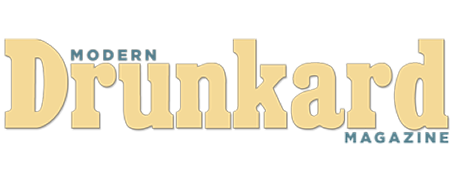

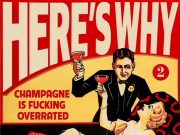
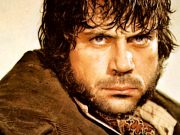
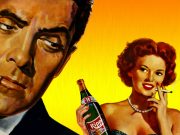
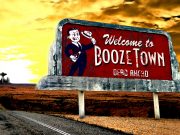




Not to mention PBR was the beer Chick Donahue took to Vietnam on his “greatest beer run ever”
Unlike the movie, in real life Chick had to resupply several times in country.
Long live Pabbys!!!!
Pabst…hmm. Well I spent my time in Philadelphia where essentially you HAD to drink PBR to pass for a native or Yuengling which is…not great, but not bad but it TOO serves as a passport in that city. If you get caught sipping a some local craft beer south Philly, expect a lighter thrown at you at you or some troglodyte local using…forget it. I’ve spent my time there and it’s a case of how the beer just IS….it’s more of a anthropological event illuminating what the natives see you holding in hand and how you value your life. When in Rome….drink wine, all there is, was…
PBR helped fuel one of the greatest geniuses of the C20th. Art Tatum, the man who was possibly the greatest pianist of all time & who essentially invented BeBop before Parker & Gillespie, drank PBR by the pitcher. Sadly for Tatum, used needles & empty spirit bottles are ‘cool’ , emptied pitchers aren’t, so he never got that ‘iconic’ quality. Still, without PBT maybe Art wouldn’t have given us all the masterpieces he did.
Great article! I didn’t know about the World’s Fair shenanigans with the “faked” blue ribbon winner. I came of age in Cincinnati, Ohio in the 90’s and our cheap beer of choice – I’m talking “scraping change together” cheap – was Milwaukee’s Best (affectionately called ”Beast”). $4 for a six-pack or $8 for twelve. I do recall PBR creeping into the zeitgeist at some point, however. It started showing up at the dive bars and rock clubs. Dennis Hopper’s line from “Blue Velvet” would be a meme these days, but back then it was just something people quoted and chuckled over. PBR is not a good beer by any stretch, but tolerable when you’re broke, and ok to wash down a shot. I’m still occasionally lured into the boilermaker special at a local watering hole (shitty well shot backed with a PBR) cuz I just can’t beat the price…4 bucks.